Related Research Articles
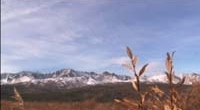
Tanacross is an endangered Athabaskan language spoken by fewer than 60 people in eastern Interior Alaska.
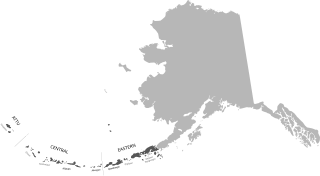
Aleut or Unangam Tunuu is the language spoken by the Aleut living in the Aleutian Islands, Pribilof Islands, Commander Islands, and the Alaska Peninsula. Aleut is the sole language in the Aleut branch of the Eskimo–Aleut language family. The Aleut language consists of three dialects, including Unalaska, Atka/Atkan, and Attu/Attuan.
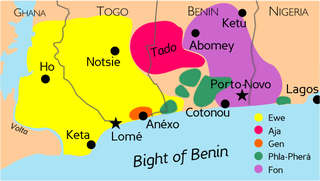
Ewe is a language spoken by approximately 5 million people in West Africa, mainly in Ghana and Togo. Ewe is part of a group of related languages commonly called the Gbe languages. The other major Gbe language is Fon, which is mainly spoken in Benin. Like many African languages, Ewe is tonal as well as a possible member of the Niger-Congo family.
The Gusii language is a Bantu language spoken in Kisii and Nyamira counties in Nyanza Kenya, whose headquarters is Kisii Town,. It is spoken natively by 2.2 million people, mostly among the Abagusii. Ekegusii has only two dialects: The Rogoro and Maate dialects. Phonologically, they differ in the articulation of /t/. Most of the variations existing between the two dialects are lexical. The two dialects can refer to the same object or thing using different terms. An example of this is the word for cat. While one dialect calls a cat ekemoni, the other calls it ekebusi. Another illustrating example can be found in the word for sandals. While the Rogoro word for sandals is chisiripasi, the Maate dialect word is chitaratara. Many more lexical differences manifest in the language. The Maate dialect is spoken in Tabaka and Bogirango. Most of the other regions use the Rogoro dialect, which is also the standard dialect of Ekegusii.
Tolomako is a language of the Oceanic subgroup of Austronesian languages. It is spoken on Santo island in Vanuatu.

Numic is the northernmost branch of the Uto-Aztecan language family. It includes seven languages spoken by Native American peoples traditionally living in the Great Basin, Colorado River basin, Snake River basin, and southern Great Plains. The word Numic comes from the cognate word in all Numic languages for “person”, which reconstructs to Proto-Numic as. For example, in the three Central Numic languages and the two Western Numic languages it is. In Kawaiisu it is and in Colorado River, and.
Tiv is a Tivoid language spoken in some states in North Central Nigeria, with some speakers in Cameroon. It had over 4.6 million speakers in 2020. The largest population of Tiv speakers are found in Benue state in Nigeria. The language is also widely spoken in some Nigerian states namely, Plateau, Taraba, Nasarawa, Cross River, Adamawa, Kaduna, and Abuja. It is by far the largest of the Tivoid languages, a group of languages belonging to the Southern Bantoid languages
Kusaal is a Gur language spoken primarily in northern eastern Ghana, and Burkina Faso. It is spoken by about 121,000 people and takes its name from the Kusaal people, or Kusasi. There is a distinctive dialect division between Agole, to the East of the Volta River, and Toende, to the West. Agole has more speakers. The 6-district capital; Bawku West with Zebilla as capital and the rest; Binduri, Bawku, Tempane, Garu and Pusiga districts mostly Agole dialect speakers. The complete Bible translation is in the Agole dialect.
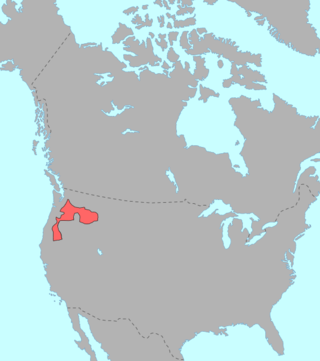
Nez Perce, also spelled Nez Percé or called nimipuutímt, is a Sahaptian language related to the several dialects of Sahaptin. Nez Perce comes from the French phrase nez percé, "pierced nose"; however, Nez Perce, who call themselves nimiipuu, meaning "the people", did not pierce their noses. This misnomer may have occurred as a result of confusion on the part of the French, as it was surrounding tribes who did so.

Kwakʼwala, or Kwak̓wala, previously known as Kwakiutl, is a Wakashan language spoken by about 450 Kwakwakaʼwakw people around Queen Charlotte Strait in Western Canada. It has shared considerable influence with other languages of the Pacific Northwest, especially those of the unrelated Salishan family. While Kwakʼwala is severely endangered, revitalization efforts are underway to preserve the language.
The phonological system of the Polish language is similar in many ways to those of other Slavic languages, although there are some characteristic features found in only a few other languages of the family, such as contrasting postalveolar and alveolo-palatal fricatives and affricates. The vowel system is relatively simple, with just six oral monophthongs and arguably two nasals in traditional speech, while the consonant system is much more complex.
Joy Fanny Ridderhof was an American missionary.
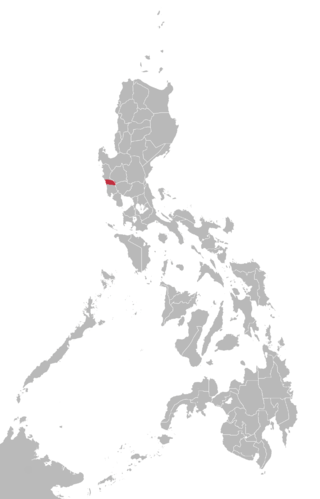
Botolan is a Sambalic language spoken by 32,867 Sambal, primarily in the Zambal municipalities of Botolan and Cabangan in the Philippines. Language status is 5 (developing).
The Tailenders is a 2005 documentary directed, produced and narrated by Adele Horne, an American independent filmmaker based out of Los Angeles. It is in limited release and has been screened in the U.S., Mexico and Scotland. According to a P.O.V. press release, The Tailenders was broadcast nationally in the US on PBS on Tuesday, July 25, 2006.
Mundari (Munɖari) is a Munda language of the Austroasiatic language family spoken by the Munda tribes in eastern Indian states of Jharkhand, Odisha and West Bengal and northern Rangpur Division of Bangladesh. It is closely related to Santali. Mundari Bani, a script specifically to write Mundari, was invented by Rohidas Singh Nag. It has also been written in the Devanagari, Odia, Bengali, and Latin writing systems.
Akha is the language spoken by the Akha people of southern China, eastern Burma, northern Laos, and northern Thailand.
Mota is an Oceanic language spoken by about 750 people on Mota island, in the Banks Islands of Vanuatu. It is the most conservative Torres–Banks language, and the only one to keep its inherited five-vowel system intact while also preserving most final vowels.
Dargwa is a Northeast Caucasian language spoken by the Dargin people in the Russian republic Dagestan. It is the literary and main dialect of the dialect continuum constituting the Dargin languages.
Dane-zaa, known in the language as Dane-zaa Ẕáágéʔ, formerly known as Beaver, is an Athabascan language of western Canada. It means "people-regular language." About one-tenth of the Dane-zaa people speak the language.
Gumuz is a dialect cluster spoken along the border of Ethiopia and Sudan. It has been tentatively classified within the Nilo-Saharan family. Most Ethiopian speakers live in Kamashi Zone and Metekel Zone of the Benishangul-Gumuz Region, although a group of 1,000 reportedly live outside the town of Welkite. The Sudanese speakers live in the area east of Er Roseires, around Famaka and Fazoglo on the Blue Nile, extending north along the border. Dimmendaal et al. (2019) suspect that the poorly attested varieties spoken along the river constitute a distinct language, Kadallu.
References
- ↑ "Geographic Language Museum". Arguelles. Retrieved 1 August 2012.
- ↑ ""Good News" audio-visual". Global recordings network. Retrieved 2018-02-03.
- ↑ Easterday, Shelece; Timm, Jason; Maddieson, Ian (2011-08-17). "The Effects of Phonological Structure on the Acoustic Correlates of Rhythm" (PDF). International Phonetic Association. S2CID 30237767.
- ↑ Pearce, Mary (2008). "Vowel harmony domains and vowel undershoot". CiteSeerX 10.1.1.591.3843 .
- ↑ Rivera-Castillo, Yolanda (2013). "A Monophonemic Analysis of Prenasalized Consonants in Saramaccan". Revista de Crioulos de Base Lexical Portuguesa e Espanhola. Retrieved 2018-02-02.
- ↑ Mąsior, Mariusz; Igras, Magdalena; Ziółko, Mariusz; Kacprzak, Stanisław (2013-05-09). "Database of speech recordings for comparative analysis of multi-language phonems". Studia Informatica (in Polish): 79–87. doi:10.21936/si2013_v34.n2B.52 . Retrieved 2018-02-03.
- ↑ Castaldo F; Dalmasso E; Laface P; Colibro D; Vair C (2008-09-23). "Politecnico di Torino System for the 2007 NIST Language Recognition Evaluation" (PDF). Retrieved 2018-02-02.
- ↑ Rybka, Konrad (2015-06-01). "State-of-the-Art in the Development of the Lokono Language" (PDF). University of Hawaii Press - Language Documentation & Conservation. Retrieved 2018-02-02.
- ↑ Rybka (2016). "The linguistic encoding of landscape in Lokono". University of Amsterdam. Retrieved 2018-02-02.